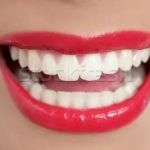When to Consider Getting Dental Braces or Clear Aligners
- 1. Understanding Dental Braces and Clear Aligners
- 2. When to Consider Getting Dental Braces
- 3. When to Consider Clear Aligners
- 4. Benefits of Dental Braces vs Clear Aligners
- 5. Personal Stories of People with Braces or Clear Aligners
- 6. How to Choose the Right Treatment for You
1. Understanding Dental Braces and Clear Aligners
Dental braces and clear aligners are both popular treatments for people looking to straighten their teeth. While both have the same goal—to improve the alignment of your teeth—there are important differences in how they work. Braces have been the traditional solution for decades, and they involve using metal brackets and wires that are adjusted over time to move the teeth into their desired positions.
Clear aligners, on the other hand, are a more recent development. They use a series of clear, removable trays that fit over your teeth. These trays gradually shift your teeth over time, and they are designed to be worn for a specific period each day. Aligners are popular for their discreet appearance, making them an attractive choice for those who want a less noticeable option compared to traditional braces.
Both treatments have their pros and cons, which we’ll explore in detail throughout this article. Understanding when to choose one option over the other is crucial for achieving the best results for your dental health and lifestyle.
2. When to Consider Getting Dental Braces
Dental braces are typically the best option for people with more severe dental alignment issues. If you have crooked, overcrowded, or misaligned teeth that are difficult to correct with other treatments, braces are often the most effective solution. Braces can handle complex cases of malocclusion, such as crossbites, overbites, and underbites, with precision.
Additionally, braces are the go-to solution for patients who need comprehensive movement of their teeth. Since the wires and brackets are permanently affixed to the teeth, they provide continuous pressure, which is ideal for significant realignment. Braces can also address bite issues more efficiently than clear aligners in some cases.
If you don’t mind the more noticeable appearance and the regular visits to the orthodontist for adjustments, braces may be the right choice for you. They are also a good option if you have a younger child or teen who needs orthodontic treatment, as they may not be responsible enough to consistently wear clear aligners as required.
3. When to Consider Clear Aligners
Clear aligners are an excellent option for people who have mild to moderate dental alignment issues and want a more discreet treatment. If your teeth are only slightly misaligned or you are dealing with spacing issues, aligners can effectively shift your teeth into place over time.
One of the most significant advantages of clear aligners is their invisibility. Made from clear plastic, these trays are nearly invisible, making them a great choice for adults and teens who don’t want to draw attention to their braces. Additionally, aligners are removable, which means you can take them out while eating, drinking, brushing, and flossing. This can make oral hygiene easier compared to traditional braces, as there are no brackets or wires to clean around.
Clear aligners are typically a good choice for those with a busy lifestyle who want to avoid the discomfort of metal braces. They are also more comfortable in some cases, as they don’t cause irritation to the inside of the mouth. However, it’s important to be disciplined about wearing the aligners for the recommended number of hours each day for optimal results.
4. Benefits of Dental Braces vs Clear Aligners
When choosing between dental braces and clear aligners, it's important to consider their respective benefits. Both options can effectively straighten your teeth, but each has distinct advantages based on your specific needs.
- Braces: Braces are highly effective for complex dental problems, such as severe misalignment, bite issues, or significant spacing problems. They are ideal for patients who need significant realignment of their teeth.
- Clear Aligners: Clear aligners are more discreet and comfortable for many users. They are a good choice for individuals with mild to moderate alignment issues who want an invisible solution. The removability of aligners makes them more convenient for cleaning and eating.
The choice between braces and aligners ultimately depends on your dental needs, lifestyle, and aesthetic preferences. For more severe cases or when you need precise, continuous treatment, braces are the better option. For those who prefer a less noticeable option and have milder alignment issues, clear aligners can be an excellent solution.
5. Personal Stories of People with Braces or Clear Aligners
Real-life experiences can help guide your decision when considering dental braces or clear aligners. Take John, a 30-year-old professional who opted for clear aligners after years of avoiding traditional braces. John had mild to moderate misalignment, and the clear aligners allowed him to maintain his professional appearance while achieving great results. He found the removable trays convenient, and the treatment duration was shorter than he had anticipated.
On the other hand, Sarah, a teenager, had a more severe case of overcrowded teeth and an overbite. Her orthodontist recommended braces because they would provide the necessary force to address her bite issues. Sarah initially struggled with the appearance of her braces but quickly adapted. The result was a beautiful, functional smile that she’s proud of today.
Both John and Sarah’s experiences show that the right treatment depends on the severity of the alignment issues, the patient’s age, and their personal preferences. Real-life stories like these can help reassure you that both braces and clear aligners are effective treatments when used correctly.
6. How to Choose the Right Treatment for You
Choosing between dental braces and clear aligners is a personal decision that depends on various factors, including the severity of your dental issues, aesthetic preferences, and your ability to commit to treatment. Consulting with a qualified orthodontist is essential to determining the best solution for your teeth and lifestyle.
If you have complex dental needs or a severe misalignment, braces may be the best option for you. However, if you prefer a more discreet, comfortable solution and have mild to moderate misalignment, clear aligners may be the right choice. Your orthodontist will guide you through the decision-making process, helping you understand the pros and cons of each option.
Ultimately, both dental braces and clear aligners can help you achieve a beautiful smile, but the right choice depends on your unique needs and goals. Take the time to discuss your options with a professional to ensure that you make the best decision for your dental health and personal preferences.







 Melissa Tuft, DDS5.0 (57 review)
Melissa Tuft, DDS5.0 (57 review) Dental Solutions of Roxborough4.0 (219 review)
Dental Solutions of Roxborough4.0 (219 review) McLemore Dentistry4.0 (330 review)
McLemore Dentistry4.0 (330 review) 24 Hour Dentist3.0 (450 review)
24 Hour Dentist3.0 (450 review) 19th Avenue Dental Excellence: Ramos Reynita DDS0.0 (0 review)
19th Avenue Dental Excellence: Ramos Reynita DDS0.0 (0 review) Town Square Dental & Orthodontics4.0 (311 review)
Town Square Dental & Orthodontics4.0 (311 review) The Importance of Oral Health Education During Pregnancy for a Healthy Pregnancy
The Importance of Oral Health Education During Pregnancy for a Healthy Pregnancy Best Tips for Brushing Your Teeth Properly for Healthy Gums: Essential Techniques for Oral Health
Best Tips for Brushing Your Teeth Properly for Healthy Gums: Essential Techniques for Oral Health Why Skipping Dental Checkups Can Lead to Bigger Oral Health Problems
Why Skipping Dental Checkups Can Lead to Bigger Oral Health Problems Advantages of Porcelain Dental Restorations
Advantages of Porcelain Dental Restorations How Can Diabetes Cause Tooth and Gum Problems? Preventing and Managing Oral Health Issues
How Can Diabetes Cause Tooth and Gum Problems? Preventing and Managing Oral Health Issues Healthy Habits for Promoting Good Oral Health and Hygiene: Tips for a Healthy Smile
Healthy Habits for Promoting Good Oral Health and Hygiene: Tips for a Healthy Smile